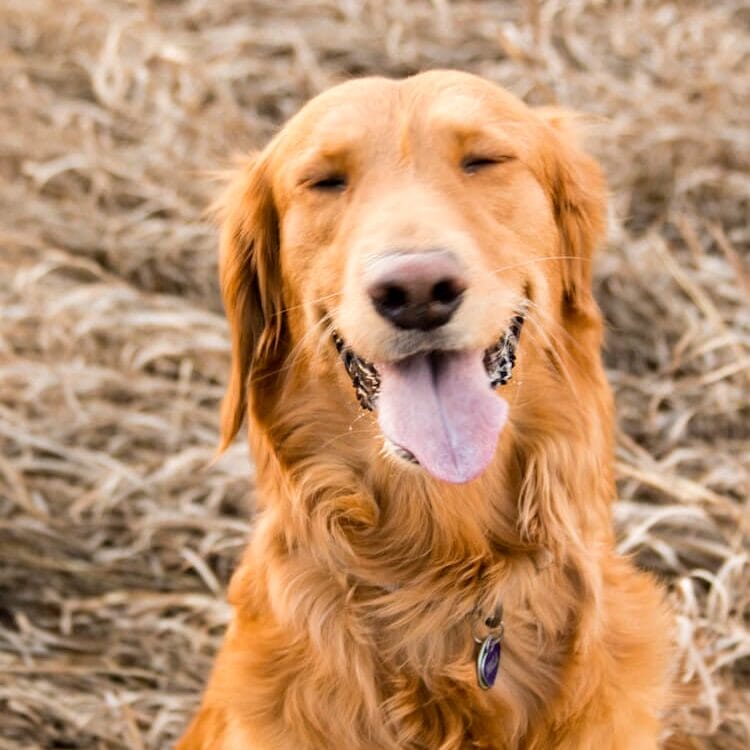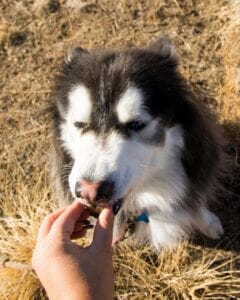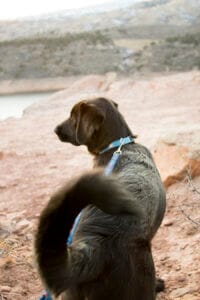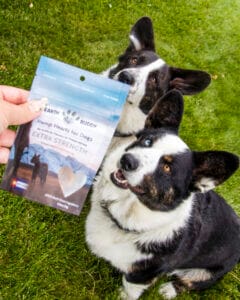Sometimes it can feel like the shedding season is year-round, especially when you’re walking up your stairs and notice the piles of fur accumulating in the corners. While some dogs shed more than others throughout the year, there are actually periods of the year when you’ll notice more fur adding to those piles. So, when is shedding season for dogs? And how can you give your vacuum cleaner a little break? First, we’ll have to discuss some fundamentals, but then we’ll dive in deeper.
How Does Your Dog’s Hair Grow?
Each strand of fur on your dog goes through a distinct life cycle, comprising three stages: anagen, catagen, and telegen. During the anagen phase, their hair is actively growing. The catagen phase is when your dog’s hair growth stops and begins to shed. Finally, in the telegen phase, their dead hairs fall out in many ways for new hair growth.
As the hair on your dog reaches its genetically determined length, it naturally begins to shed the dead hairs, which means this is a normal part of their physiology and will continue throughout their life. This process of continuously growing hair and shedding is a normal and healthy part of maintaining a dog’s coat.
In many dogs, particularly those with an undercoat, a large part of the shedding can occur all at once in a process commonly referred to as a ‘blowout.’ During this time, what you primarily see being shed is the thick, protective undercoat that provides insulation found in double coated breeds.
When is Shedding Season For Dogs?
The timing and intensity of shedding in dogs can be influenced by a variety of factors, but typically, dogs go through two main shedding seasons each year (spring and fall).
The spring shedding season for dogs lasts from March to June. During the spring months, as the weather outside begins to warm up, dogs shed their dense winter fur to accommodate a lighter coat that will be more comfortable during the summer. This phase, often referred to as “blowing the coat,” can be quite pronounced. During this time, dog owners might notice significant amounts of fur being shed, sometimes in noticeable clumps, as their pets transition to a coat that is more comfortable for the warmer months.
The fall shedding season ranges from September to November. In the fall, as the temperature starts to decrease, dogs prepare for the colder season by growing a thicker coat. The shedding during this period is usually less intense compared to the spring shedding as new hair growth outweighs hair loss. This natural cycle allows dogs to adjust their coat thickness in anticipation of the cooler weather, ensuring they have adequate insulation and warmth during the cold winter months.
Factors Affecting Shedding in Dogs In The Spring and Fall
It’s important to note that the frequency and intensity of shedding can vary greatly among different breeds and individual dogs. Factors such as breed, age, health, and even the environment can influence a dog’s shedding patterns. For example, dogs that are primarily kept indoors may shed more evenly throughout the year, while those who spend a lot of time outdoors may have more pronounced seasonal shedding.
You may also notice that there’s a lot more fur being shed during the spring shedding season than the fall. That’s because their winter fur is a lot thicker. Keep in mind that it’s designed to keep them warm. Compare it to your summer coat versus your winter jacket. Your winter coat is likely much thicker than the one you’d use on a cool late summer evening.
Excessive Shedding in Dogs
Excessive shedding in dogs, while a normal part of pet ownership, can sometimes indicate underlying health issues that need attention. While it’s natural for dogs to lose old or damaged hair, excessive shedding can be a sign you need to take a trip to the vet. They will check out your dog’s coat, likely ask about their diet, and perhaps even run some tests. You may notice them run their comb through your dog’s hair as well to check for parasites, like fleas.
They may also ask about your dog’s behavior. Changes in routine, additions to the family, the move to a new home, and other environmental changes may affect your dog’s shedding periods. If possible, jotting down what you’re noticing behaviorally and where your dog is losing hair on a piece of paper before taking the trip is recommended.
Take note of any patches of fur that are missing or bald patches. There’s no such thing as too much information. Your vet would rather have too much information than not enough.
Double Coated Dogs Shed More Notably
Seasonal shedding is especially notable in breeds like Siberian Huskies, which are known to “blow their coat” twice a year in a significant shedding event. These periods of heavy shedding can be quite a challenge for dog owners, often leading some to jokingly consider scheduling a vacation during these times and leaving the task of managing the flurry of fur to a pet sitter!
Which Double Coated Dog Breeds Shed The Most?
Even among double coated breeds, there are some breeds that you’ll notice shed more than others. Arctic breeds, for example, are known to shed more than a Golden Retriever or Corgi next door. Here are some examples:
Samoyed: The Samoyed was designed to withstand extreme temperatures. As such, they have super fluffy outer coats with a wool-like undercoat (that doesn’t mean they should be left outside for long periods of time). You’ll probably get a decent pile of fur every time you sweep the rooms of your home. You’ll see mounds of fur during the shedding season.
Leonberger: This is another relatively rare breed. If you have one of these pups, you’ll notice they have an incredibly thick outer coat with a fluffy undercoat. This is another example of a breed that sheds daily. You can expect to sweep and vacuum the house daily-or maybe even a couple of times each day.
These are just two of the breeds with double coats that shed significantly more than your average double-coated breed. You’ll have to do some digging on your individual dog breed to determine how much they should be shedding, but to start you out, here are some other double coated dog breeds that shed throughout the year (but not as much as the Samoyed or Leonberger):
- Chow Chow
- Great Pyrenees
- Newfoundland
- Pomeranian
- Saint Bernard
Proper Grooming Practices To Help Dog Shedding
Proper grooming during these shedding seasons is crucial. Regular brushing helps remove loose hair, supports skin health, and promotes the distribution of natural oils throughout the coat. This not only helps manage the amount of fur around the house as your dog sheds but also supports the health and appearance of your dog’s coat.
For some heavy-shedding breeds, professional grooming services can be a valuable resource to effectively manage dog shedding and keep your furry friend comfortable. And using the right tools, like undercoat rakes or deshedding brushes as your dog sheds, can make this process more effective and comfortable for the dog. Regular grooming not only helps manage the shedding season but also supports skin and coat health which helps calm dogs.
Don’t Shave Your Double-Coated Dog
There is a misconception that you can shave your double-coated dog breed to reduce how much they shed. While a professional groomer can help their coat look and feel well-kept by giving them a little dog hair cut, you should never shave your double-coated dog unless it’s required under the guidance of a professional groomer or veterinarian.
Shaving your double-coated dog breed could affect dog shedding seasons as well as the appearance and texture of your dog’s hair coat. If you ever have a question about how to groom your dog properly, give a professional a call and ask. Some dogs, like the Samoyed, are more difficult to groom on your own than others.
How Bovine Colostrum Can Help Dog Shedding
A high quality Bovine Colostrum supplement, like Earth Buddy’s Gut Health for dogs, along with proper grooming routines, play a crucial role in supporting skin and coat health. Colostrum for dogs can significantly increase gut microbiota diversity, which can support skin health, contributing to a shinier, healthier coat. Earth Buddy’s colostrum supplement also includes a full-spectrum CBD with cannabinoids, terpenes, and flavonoids, that work together to support physical and mental well-being.
The regular use of a reputable colostrum supplement, in conjunction with a consistent grooming schedule, helps achieve a soft, silky, shiny and healthy coat, especially during the dog shedding season. Grooming not only removes dirt, debris, and loose fur but may help soothe skin-related issues associated with seasonal allergies.
Dog gut health is directly correlated with overall quality of dog’s skin and coat. Plus, incorporating full-spectrum CBD into your dog’s wellness routine in combination with colostrum milk may also contribute to overall health benefits beyond just skin and coat care. It’s known to support other aspects of health. For example, it could also help support joint flexibility and mobility, making it a versatile addition to any pet care regimen.
For further reading, we recommend:
- https://pubmed.ncbi.nlm.nih.gov/21401741/#:~:text=The%20hair%20follicle%20has%20a,associated%20with%20specific%20morphological%20changes
- https://lacvets.com/blog/dog-shedding-tips/
- https://www.aaha.org/your-pet/pet-owner-education/ask-aaha/pets-and-shedding/
- https://www.researchgate.net/publication/230030086_A_study_of_normal_hair_in_the_dog
- https://www.semanticscholar.org/paper/The-canine-hair-cycle-a-guide-for-the-assessment-of-M%C3%BCntener-Doherr/5312e8a08e80d4a38c9c7500bd1aff5205f3fb5a
You Might Also Enjoy
Reactive dog barking may sound intimidating, but it’s important to differentiate it from dog aggression.…
Your dog’s skin is their largest organ making dog skin care a crucial part of…
Like us, our dogs, and other mammalian species, cats have an endocannabinoid system. This system…








